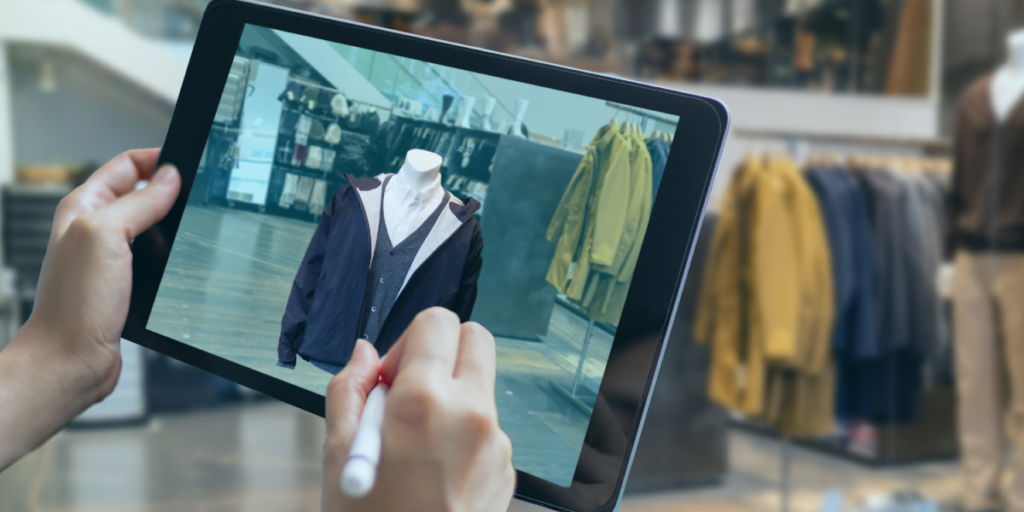Interactive advertising solutions have revolutionized how brands engage with their audiences by shifting from passive consumption to active participation, fundamentally changing the dynamic between consumers and marketers. Instead of merely watching or seeing an advertisement, consumers are invited to become part of the story, often through clicking, swiping, playing, or personalizing content. This shift makes advertisements not only more memorable but also more effective at conveying a brand’s message. The growth of mobile devices, social media, and internet accessibility has accelerated the demand for these immersive advertising experiences. Brands that embrace interactive promo solutions position themselves at the forefront of innovation, creating deeper connections with consumers in a crowded and competitive marketplace. As consumer attention spans continue to shorten, interactive advertising solutions provide an engaging way to capture and hold interest that traditional static ads struggle to achieve.
Key Components of Interactive Advertising Solutions
At the heart of interactive advertising solutions are several powerful elements that facilitate engagement, including gamification, augmented reality (AR), interactive videos, quizzes, polls, and clickable infographics. Gamification integrates game-like features such as points, rewards, and challenges into advertising content, encouraging users to participate actively rather than passively consume information. Augmented reality blends digital elements with the real world, allowing users to visualize products or experiences in their own environment through their smartphones or AR glasses. Interactive videos enable viewers to make choices during the video, shaping the storyline or learning more about a product in a non-linear way. Clickable content allows consumers to explore features, benefits, or additional information at their own pace. These components make the brand experience more dynamic and customized, fostering emotional connections and providing users with a sense of control and fun while engaging with the advertisement. Interactive advertising solutions make it possible to combine all these technologies into a cohesive experience that enhances user involvement.
Benefits for Marketers Using Interactive Advertising Solutions
Marketers stand to gain significantly by incorporating interactive promo solutions into their campaigns. One major advantage is the ability to collect rich, actionable data from user interactions in real time, which can be used to fine-tune messaging and targeting strategies. This level of insight goes beyond traditional metrics like impressions or clicks, revealing how users engage with specific elements and which aspects of the campaign resonate best. Furthermore, interactive promo solutions typically generate higher engagement rates because they require active participation, increasing the likelihood of brand recall and driving higher conversion rates. Enhanced engagement also tends to foster greater brand loyalty as consumers feel more connected to brands that offer personalized, enjoyable experiences. These benefits translate into a more efficient allocation of marketing budgets and improved return on investment, making interactive advertising solutions an essential tool for modern marketers.
Consumer Behavior and Interactive Advertising Solutions
The evolution of consumer behavior has made interactive advertising solutions indispensable for brands aiming to stay relevant. Today’s consumers demand more than just exposure to advertisements; they seek meaningful and entertaining interactions that respect their time and preferences. Interactive advertising solutions meet these expectations by allowing consumers to control how they engage with brand content, creating a personalized and immersive experience. This approach taps into intrinsic motivations like curiosity, competition, and social sharing. When consumers actively participate, they are more likely to develop positive associations with the brand, increasing the chance of repeat visits or purchases. Additionally, interactive promo solutions often encourage social sharing, turning consumers into advocates who promote the brand within their networks. This organic spread amplifies the brand message and builds trust more effectively than traditional advertising.
Technological Innovations Driving Interactive Advertising Solutions
The rapid advancement of technology is a key driver behind the expanding capabilities of interactive advertising solutions. Artificial intelligence (AI) and machine learning allow for hyper-personalized content delivery by analyzing vast amounts of user data to predict preferences and behaviors. For example, AI can customize product recommendations or tailor interactive storylines based on individual user profiles. Meanwhile, the rollout of 5G networks enhances the speed and quality of data transmission, enabling smooth, high-definition interactive experiences on mobile devices without lag or interruptions. Beyond AI and connectivity, technologies like voice recognition, facial recognition, and haptic feedback are being integrated into interactive ads to create multi-sensory experiences. Interactive promo solutions capitalize on these innovations to provide brands with unprecedented tools to captivate audiences and stand out in an increasingly saturated digital advertising landscape.
Examples of Successful Interactive Advertising Solutions

Several brands have successfully leveraged interactive promo solutions to create memorable and effective campaigns. For instance, beauty companies like L’Oréal and Sephora utilize augmented reality-powered virtual try-ons, allowing consumers to see how makeup products will look on their own faces in real time using their smartphones. This reduces hesitation and increases purchase confidence by offering a risk-free, personalized experience. Automotive brands like BMW and Audi have introduced interactive vehicle configurators that let users customize colors, trims, and features digitally, providing an engaging way to explore options before visiting a dealership. Another example is Nike, which uses interactive videos that let viewers select different storylines or athletes, creating a personalized narrative that boosts brand affinity. These examples highlight how interactive advertising solutions not only engage consumers but also influence their buying decisions by making the process more enjoyable and informative.
Challenges in Implementing Interactive Advertising Solutions
While the benefits of interactive advertising solutions are clear, implementing these campaigns is not without challenges. One significant hurdle is the increased cost and complexity compared to traditional advertising formats. Producing high-quality interactive content often requires collaboration between creative, technical, and data teams, which can increase development time and expenses. Ensuring seamless functionality across various devices and platforms is another challenge, as technical glitches can lead to user frustration and damage brand reputation. Additionally, privacy concerns must be carefully managed, especially when collecting user data to personalize experiences. Brands must comply with regulations like GDPR and CCPA to maintain consumer trust. Furthermore, measuring the true effectiveness of interactive promo solutions requires sophisticated analytics tools and expertise, which can be a barrier for some companies.
Role of Data Analytics in Interactive Advertising Solutions
Data analytics is essential for maximizing the potential of interactive advertising solutions by providing insights that guide campaign optimization. By tracking user interactions such as clicks, time spent, choices made, and navigation paths, marketers gain a comprehensive understanding of how audiences respond to different elements. These insights help identify which features drive engagement and conversions, allowing for iterative improvements. Predictive analytics can also forecast user behavior, enabling proactive adjustments to content and targeting strategies. Furthermore, integrating analytics with customer relationship management (CRM) systems enables brands to nurture leads more effectively by delivering relevant follow-ups based on interactive ad engagement. In a competitive landscape, leveraging data analytics ensures that interactive promo solutions deliver meaningful results rather than simply novelty.
Integrating Social Media with Interactive Advertising Solutions
Social media platforms have become vital channels for deploying interactive promo solutions due to their inherent emphasis on user participation and sharing. Features like polls, quizzes, live video sessions, augmented reality filters, and shoppable posts create numerous opportunities for brands to connect with audiences in a fun and authentic way. For example, Instagram and Snapchat’s AR filters allow users to interact with branded content in a playful manner, often encouraging sharing with friends. Facebook and TikTok support interactive video formats that include calls to action and branching storylines, making the ad experience more engaging. The social nature of these platforms amplifies the reach of interactive promo solutions, as users become brand ambassadors by sharing content within their networks. This peer-to-peer endorsement enhances credibility and broadens campaign impact far beyond the initial audience.
Future Trends in Interactive Advertising Solutions
Looking ahead, interactive advertising solutions are poised to become even more immersive and intelligent through the adoption of virtual reality (VR), mixed reality (MR), and conversational AI. VR and MR will allow consumers to step fully inside branded environments, experiencing products and stories in three-dimensional spaces that blur the line between digital and physical worlds. These experiences will deepen emotional connections and provide opportunities for innovative storytelling. At the same time, conversational AI powered by natural language processing will enable more natural and dynamic interactions, such as personalized shopping assistants or interactive brand representatives who respond in real time. As these technologies mature and become more accessible, brands that experiment and innovate will set new standards for customer engagement and brand loyalty by leveraging interactive promo solutions in new ways.
Strategic Approach to Implementing Interactive Advertising Solutions
For brands to successfully adopt interactive promo solutions, a well-thought-out strategic approach is crucial. This begins with a thorough understanding of the target audience’s preferences, behaviors, and technological capabilities. Setting clear objectives—whether driving awareness, engagement, or sales—guides the selection of appropriate interactive elements. It is advisable to start with pilot campaigns to test different formats and gather data on performance, allowing for refinement before larger rollouts. Collaboration between creative teams, technology experts, and data analysts ensures the campaign is visually appealing, technically seamless, and data-driven. Additionally, ongoing monitoring and iteration based on user feedback and analytics data maximize effectiveness. A strategic mindset combined with flexibility enables brands to capitalize on the evolving landscape of interactive advertising solutions.
Conclusion
Interactive advertising solutions are fundamentally transforming how brands connect with consumers in the digital age by creating engaging, personalized, and immersive experiences. These solutions offer significant advantages including enhanced engagement, richer data collection, and improved return on investment compared to traditional advertising methods. Driven by technological innovations and evolving consumer expectations, interactive advertising solutions will continue to play a critical role in marketing strategies across industries. To succeed, brands must adopt a strategic, data-informed approach and remain agile as new technologies and platforms emerge. Embracing interactive promo solutions is no longer optional but essential for brands seeking to differentiate themselves and build lasting customer relationships in an increasingly competitive marketplace.
















